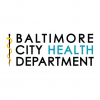Baltimore City Intergenerational Initiative For Trauma And Youth (B-Ciity) Supported By Recast
In September 2016, the Baltimore City Health Department (BCHD) was awarded a five-year, $5million grant by the Substance Abuse and Mental Health Services Administration (SAMHSA) for the Resiliency in Communities After Stress and Trauma (ReCAST) program.
The goal of ReCAST is to reduce the impact of trauma and build resilience in Central West Baltimore communities adversely impacted by the April 2015 unrest. The project empowers community organizations from West Baltimore to implement high-quality, trauma-informed services to promote connectedness and resilience in youth.
BCHD brought together a community coalition made up of several community organizations and community members that live and work in the Central West Baltimore communities of Sandtown/Winchester, Upton/Druid Heights, and Penn North. The Coalition supported the hiring of a Project Director and electing a community board.
The Coalition voted to rebrand itself as B-CIITY (Baltimore City Intergenerational Initiative for Trauma and Youth) to better represent the full scope and vision of the Coalition. The B-CIITY Community Board, made up of residents and stakeholders, serves in a leadership and advisory capacity to organizations that have and will receive grant funding to support their trauma-informed and resilience-based initiatives.
Vision
B-CIITY envisions a hopeful and thriving Central West Baltimore for all.
Mission
The B-CIITY mission is to promote healing and thrive-ability through collaboration, resource generation, and network-building for organizations that serve youth and their families experiencing trauma.
B-CIITY Values
The main purpose of B-CIITY is to reduce the impact of trauma and build resilience in the Central West Baltimore communities of Sandtown/Winchester, Upton/Druid Heights, and Penn North, so that young people (ages 14–24) can complete school, build healthy relationships, and create a safe financial pathway. We do this through:
❖ Partnering with organizations that have community experience.
❖ Providing a platform for genuine community representation and leadership.
❖ Setting a standard for access and trust.
❖ Creating equitable access through the process, policy, and capacity-building with a commitment to integrity.
B-CIITY Priorities
❖ Leadership, Education, and Workforce Development
❖ Mental, Physical, and Spiritual Health
❖ Family, Community, and Cultural Connectedness
RESULTS BASED ACCOUNTABILITY MODEL
B-CIITY along with SAMHSA worked together to choose seven (7) results that would represent health and success in the 21217 communities. All applicants will be required to choose no more than three (3) Results to focus on. Applicants will match their chosen Results with at least two (2) Indicators of Success. The seven B-CIITY results and four indicators are listed below:
Seven B-CIITY Results
- Build a foundation to promote well-being, resiliency, and community healing through community-based, participatory approaches.
- Create more equitable access to trauma-informed community behavioral health resources.
- Strengthen the integration of behavioral health services and supports as well as other community systems to address the social determinants of health.
- Create community change through community-based, participatory approaches that promote community and youth engagement, leadership development, improved governance, and capacity building.
- Ensure that program services and supports are culturally specific and developmentally appropriate.
- Increase opportunities for youth to participate on community boards, student government associations, community organizing efforts, and other youth-led advisory or leadership boards and councils.
- Increase the level of community participation/leadership in community organizations.
B-CIITY Indicators of Success
1. The percentage (%) of students enrolled in your program who are NOT chronically absent
2. The percentage (%) of students enrolled in your program who have above a 2.00 GPA
3. The percentage (%) of participants enrolled in your program who are employed
4. The percentage (%) of participants enrolled in college
